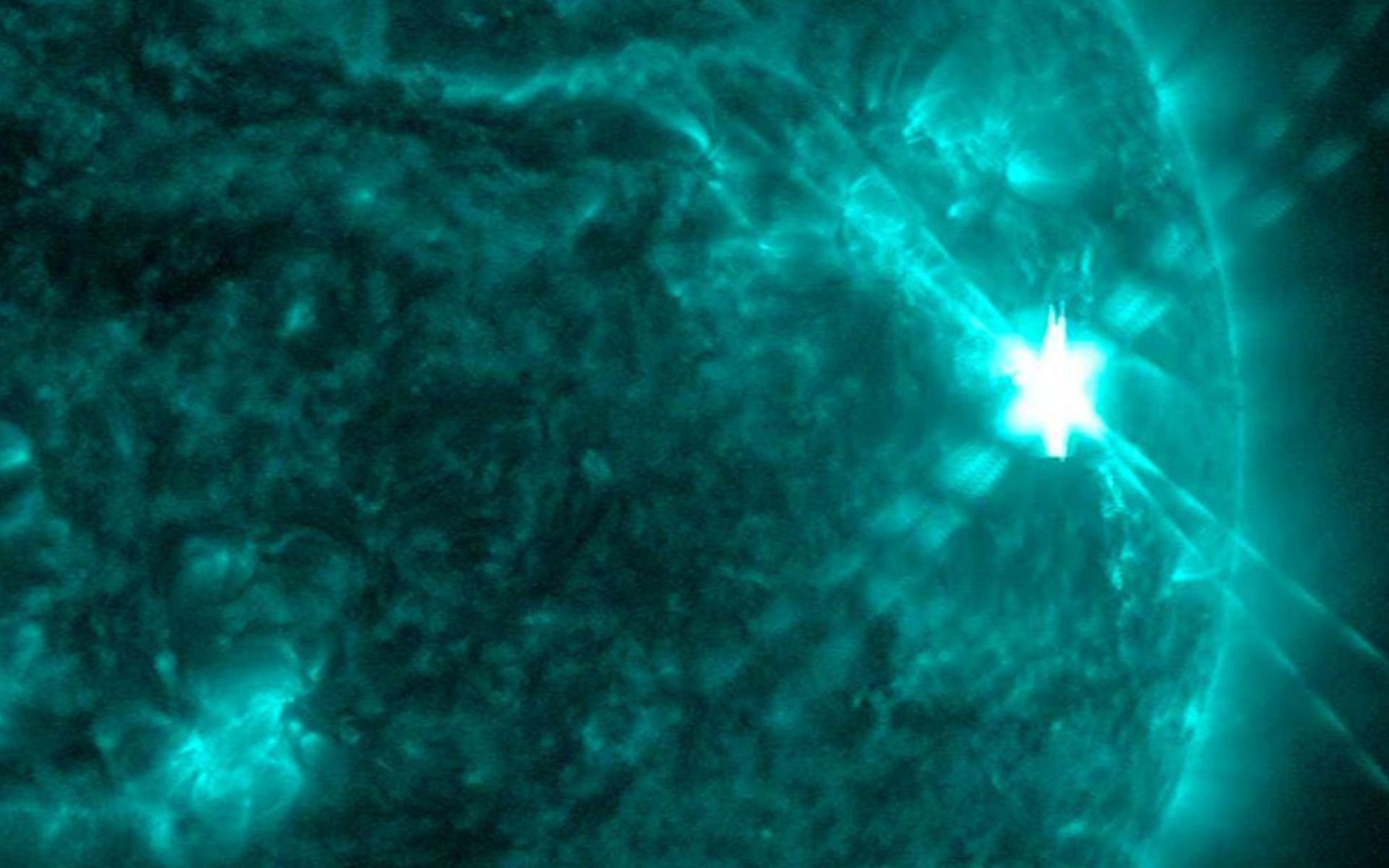The solar flare that occurred on December 14 at 2:02 pm (Brasília time) is the most intense event ever recorded in the Sun’s current cycle. This phenomenon emitted a massive pulse of high-energy radiation, images of which were captured by Solar Dynamics. The Observatory (SDO) is a space telescope launched by NASA in 2010 to study the star.
According to the images, a region prone to sunspots called AR 3514 exploded. It causes an X2.8 class solar flare, making it one of the largest solar events ever recorded. Emissions marked with the letter X, classified according to the amount of x-rays they emit, are the most intense.
According to ScienceAlert, the event caused interference or disruption of high-frequency radio signals in South America for two hours. Simultaneously, the Sun produced a coronal mass ejection (CME), consisting of charged particles (ions and electrons) accelerated along magnetic field lines, releasing up to billions of tons of plasma from the corona. was launched into space.
What are the risks of solar flares for Earth?
Because some of this plasma bombardment may be heading toward Earth, government agencies such as the U.S. National Oceanic and Atmospheric Administration (NOAA) are currently assessing the risks of a moderate geomagnetic storm. However, according to experts, there is no need to worry about this incident.
Although extremely powerful, the solar flare was not pointed directly at our planet but was relatively far away. This means that any impact may only be superficial or indirect. For the UK Met Office, a possible reflection expected on December 17 will lead to a smaller magnetic storm.
This type of “storm” is a temporary disturbance of the Earth’s magnetosphere caused by the flow of solar particles. Since this solar wind shock wave still takes some time to reach Earth, the event occurs within a few days of the CME’s release.
Consequences of geomagnetic storm
At first, the consequences of a geomagnetic storm on Earth could be catastrophic. In addition to destroying artificial satellites, they can cause interference in telephone services and high-frequency radio communications, outages in the electrical system, damage to electronic equipment, and even beautiful auroras.
This is because solar particles interact with the Earth’s magnetic field, creating electrical currents in the ionosphere that can flow through our electric power transmission lines, submarine cables, conductor tubes, and radio communications systems.
Another possible consequence, called the “spacecraft drag effect” due to changes in low-Earth orbit, could force some artificial satellites to correct their course. However, the AR 3514 region is currently moving away from Earth and soon “disappears” on the other side of the Sun.
Find up-to-date information on solar energy activities at TecMundo. If you wish, take the opportunity to learn whether the Sun can turn into a black hole.
Source: Tec Mundo
I’m Blaine Morgan, an experienced journalist and writer with over 8 years of experience in the tech industry. My expertise lies in writing about technology news and trends, covering everything from cutting-edge gadgets to emerging software developments. I’ve written for several leading publications including Gadget Onus where I am an author.












